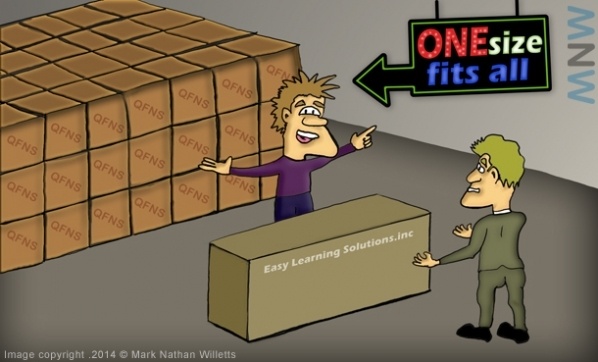Educational Pinball - Comparing eLearning To A Game Of Pinball
For a few weeks, I thought about the concept, as I worked on my current courses, following which I undertook some initial brainstorming. Eventually, I came to realize that an analogy of comparing e-learning to a game of pinball, would seem to fit as a striking visualization to represent a learner's interaction with the various elements that embody strong e-learning courses.
Firstly let us take a look at the elements which combine to form an e-learning course, before looking at how they would relate to the analogy. A typical e-learning course can comprise any combination of the following elements:
- informative text
- photographic imagery
- illustrated imagery
- animation
- music/sound effects
- audio narration
- a number of other treatments
- including sub-categories of each
The problem is, that there is little consensus over which combinations of these elements are the most effective, and in fact whether certain elements can effectively convey the understanding to a learner without being combined with other elements; for example, would a course that is constructed mostly of informative text be very effective? informative text generally provides the main basis for most courses, as it is the most utilised method of imparting knowledge.
The image below represents my impression on how a learner interacts with a course based solely on informative text.

The image above represents the interaction between a learner and a course based solely on informative text. I have assigned 2 targets representing informative text and a learning goal at the top. The learner's interaction with the material is represented by the flippers. Through this visual analogy, the value of the points generated by repeatedly hitting the informative text targets would combine together in representation of a learner generating their understanding of a given subject before aiming for the learning goal at the top which signifies comprehension and retention. For this particular scenario the pinball table has no other items and as such it will generally be harder to achieve a high score and reach the goal of comprehension at the top, than it would be if the game was populated with larger more valuable targets through a more developed and multimedia enriched learning environment.
Using the previous example as a foundation, it is obvious that a learner can indeed learn through basic methods such as informative text alone, but that if we incorporate further carefully considered elements including higher learning values then it will make learning a lot easier and effective. For instance, it has been widely proven that our brains are more visual than they are text driven, and so combining imagery with the text can in turn generate a higher value of learning, but only if the imagery has considered strengths which reinforce and heighten the educational message. Adding an image simply for decoration will add little value to a course, as will adding animated movement to elements with no consideration as to the animation's meaning. Aesthetical values do hold a level of importance, as does some movement to keep a learner’s attention, but these should never be at the cost of, or in place of well thought out educational materials. The same applies to applying audio, video etc, with different elements having proven strengths when combined together in certain ways, as evidenced by various case studies around the world.
Obviously each subject and even each module of a subject will benefit from different combinations; for example incorporating a software simulation when necessary should usually allow a learner to gain the knowledge of a software program quicker and more efficiently than large volumes of informative text and diagram combinations. The image below represents a more rounded course, with a greater level of higher value learner experiences which when combined through a considered approach, allow the learner to builder up stronger understanding and provide an easier and more progressive path to the learning goal.

Since I started thinking of the courses in this manner, it has allowed me to quickly realise and improve the value of the elements and their overall effectiveness, whilst stripping away unnecessary material too. Obviously your needs will vary, but this analogy can be modified to your requirements and also used as an effective tool for explaining to subject matter experts and stakeholders, the necessity for fully realised multimedia enhanced learning methods.
Thank you for reading and I hope you find this article both interesting and useful. This topic has so much depth that I have only scratched the surface here. If you have anything that you feel you could add to this topic, or any comments in general, please leave feedback below in the comments section.



